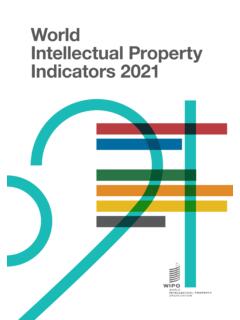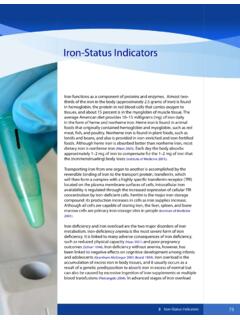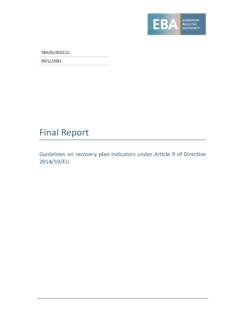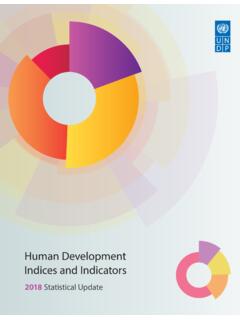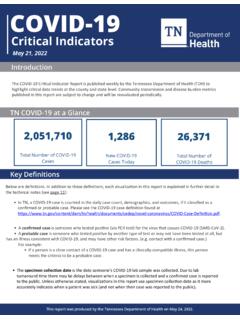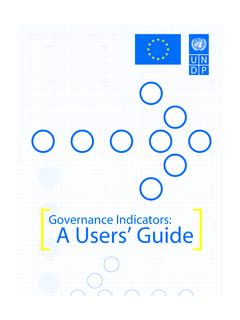Transcription of Istation's Indicators of Progress (ISIP) Early Reading …
1 Istation's Indicators of Progress (ISIP) Early Reading Technical report Computer Adaptive Testing System for Continuous Progress Monitoring of Reading Growth for Students Pre-K through Grade 3 Patricia Mathes, Joseph Torgesen, Jeannine Herron, Copyright 2016 istation . All rights reserved. 2000 Campbell Centre II 8150 North Central Expressway Dallas, Texas 75206 ISIP ER Technical Manual (Version 4) Table of Contents i Table of Contents Chapter 1: Introduction .. 1-1 The Need to Link Early Reading Assessment to Instructional Planning .. 1-22 Early Reading Assessments .. 1-4 Continuous Progress Monitoring .. 1-5 Computer Adaptive Testing .. 1-5 ISIP Early Reading Assessment Domains .. 1-7 ISIP Early Reading Items .. 1-8 ISIP Early Reading Subtests .. 1-10 Description of Each Subtest .. 1-14 The ISIP Early Reading Link to Instructional Planning .. 1-21 Chapter 2: IRT Calibration and the CAT Algorithm .. 2-1 Data Analysis and Results.
2 2-3 CAT Algorithm .. 2-6 Ability Estimation .. 2-6 Chapter 3: Assessing the Technical Adequacy for Pre-Kindergarten .. 3-1 Reliability Evidence .. 3-3 Validity Evidence .. 3-4 Discussion .. 3-5 Chapter 4: Reliability and Validity of ISIP ER for Kindergarten through 3rd Grade .. 4-1 Research Design .. 4-2 Reliability .. 4-5 ISIP ER Technical Manual (Version 4) Table of Contents ii Internal Consistency .. 4-5 Test-Retest Consistency .. 4-5 Validity Evidence .. 4-6 Construct Validity .. 4-6 Concurrent Validity .. 4-6 Discussion .. 4-11 Chapter 5: Determining Norms .. 5-1 Computing Norms .. 5-3 Instructional Tier Goals .. 5-4 References .. Ref-1 ISIP ER Technical Manual (Version 4) Chapter 1: Introduction 1-1 Chapter 1: Introduction ISIP , istation s Indicators of Progress , Early Reading (ISIP Early Reading ) is a sophisticated, web-delivered Computer Adaptive Testing (CAT) system that provides Continuous Progress Monitoring (CPM) by frequently assessing and reporting student ability in critical domains of Reading throughout the academic years.
3 ISIP Early Reading is the culmination of many years of work begun by Joseph K. Torgesen, and Patricia G. Mathes, on extending computerized CPM applications to beginning readers. Designed for students in Pre-Kindergarten through Grade 3, ISIP Early Reading provides teachers and other school personnel with easy-to-interpret, web-based reports that detail student strengths and deficits and provide links to teaching resources. Use of this data allows teachers to more easily make informed decisions regarding each student s response to targeted Reading instruction and intervention strategies. ISIP Early Reading provides growth information in the five critical domains of Early Reading : phonemic awareness, alphabetic knowledge and skills, fluency, vocabulary, and comprehension. It is designed to (a) identify children at risk for Reading difficulties, (b) provide automatic continuous Progress monitoring of skills that are predictors of later Reading success, and (c) provide immediate and automatic linkage of assessment data to student learning needs, which facilitates differentiated instruction.
4 ISIP Early Reading has been designed to automatically provide continuous measurement of Pre-Kindergarten through Grade 3 student Progress throughout the school year in all the critical areas of Early Reading , including phonemic awareness, alphabetic knowledge and skills, fluency, vocabulary, and comprehension, as mandated by the Elementary and Secondary Education Act, No Child Left Behind ISIP ER Technical Manual (Version 4) 1-2 Chapter 1: Introduction (NCLB). Importantly, there is no other continuous Progress monitoring assessment tool that measures vocabulary and comprehension. This is accomplished through short tests, or "probes," administered at least monthly, that sample critical areas that predict later performance. Assessments are computer based, and teachers can arrange for entire classrooms to take assessments as part of scheduled computer lab time or individually as part of a workstation rotation conducted in the classroom. The entire assessment battery for any assessment period requires 40 minutes or less.
5 It is feasible to administer ISIP Early Reading assessments to an entire classroom, an entire school, and even an entire district in a single day - given adequate computer resources. Classroom and individual student results are immediately available to teachers, illustrating each student s past and present performance and skill growth. Teachers are alerted when a particular student is not making adequate Progress so that the instructional program can be modified before a pattern of failure becomes established. The Need to Link Early Reading Assessment to Instructional Planning Perhaps the most important job of schools and teachers is to ensure that all children become competent readers, capable of fully processing the meaning of complicated texts from a variety of venues. Reading proficiency in our information-driven society largely determines a child s academic, social, occupational, and health trajectory for the rest of his or her life. In a society that requires increasingly higher literacy skills of its citizenry, it cannot be stated strongly enough that teaching every child to read well is not an option, but a necessity.
6 Every child who can read benefits society by being healthier, better informed, and fully employed. Sadly, teaching every child to read is a goal we are far from achieving. Large numbers of our children continue to struggle to become competent readers (National Reading Panel, 2000; Lyon, 2005). Without adequate Reading skills to comprehend and apply information from text, students frequently experience school failure. In fact, many students drop out of school as soon as they are able (Alliance for Excellent Education, 2006). The solution is to intervene when these students are in the Early grades (Bryant et al., 2000). There is a wide consensus about what comprises the elements of effective Reading instruction ( , National Reading Panel, 2000; Rayner, Foorman, Perfetti, Pesetsky, & Seidenberg, 2001; Snow, Burns, & Griffin, 1998). These elements are the same, whether the focus is prevention or intervention, and they include: phonemic awareness, alphabetic knowledge and decoding skills, fluency in word recognition and text processing, vocabulary, and comprehension (Foorman & Torgesen, 2001).
7 Likewise, consensus on the predictors of Reading difficulties is emerging from longitudinal databases ( , Fletcher, Foorman, Boudousquie, Barnes, Schatschneider, & Francis, 2002; O Connor & Jenkins, 1999; Scarsborough, 1998; Torgesen, 2002; Vellutino, Scanlon, & Lyon, 2000; Wood, Hill, & Meyer, 2001). It is well established that assessment-driven instruction is effective. Teachers who monitor their students Progress and use this data to inform instructional planning and decision-making have higher student ISIP ER Technical Manual (Version 4) Chapter 1: Introduction 1-3 outcomes than those who do not (Conte & Hintze, 2000; Fuchs, Fuchs, Hamlett, & Ferguson, 1992; Mathes, Fuchs, Roberts, 1998). These teachers also have a more realistic conception of the capabilities of their students than teachers who do not regularly use student data to inform their decisions (Fuchs, Deno, & Mirkin, 1984; Fuchs, Fuchs, Hamlett, & Stecker, 1991; Mathes et al., 1998). However, before a teacher can identify students at risk of Reading failure and differentiate their instruction, that teacher must first have information about the specific needs of his or her students.
8 To link assessment with instruction effectively, Early Reading assessments need to (a) identify students at risk for Reading difficulties; students that may need extra instruction or intensive intervention if they are to Progress toward grade-level standards in Reading by year end; (b) monitor student Progress for skill growth on a frequent and ongoing basis, and identify students falling behind; (c) provide information about students who will be helpful in planning instruction to meet their needs; and (d) assess whether students have achieved grade-level Reading standards by year end. In any model of instruction, for assessment data to affect instruction and student outcomes, it must be relevant, reliable, and valid. To be relevant, data must be available on a timely basis and target important skills that are influenced by instruction. To be reliable, there must be a reasonable degree of confidence in the student score. To be valid, the skills assessed must provide information that is related to later Reading ability.
9 There are many reasons why a student score at a single point in time under one set of conditions may be inaccurate: confusion, shyness, illness, mood or temperament, communication or language barriers between student and examiner, scoring errors, and inconsistencies in examiner scoring. However, by gathering assessments across multiple time points, student performance is more likely to reflect actual ability. By using the computer, inaccuracies related to human administration errors are also reduced. The collection of sufficient, reliable assessment data on a continuous basis can be an overwhelming and daunting task for schools and teachers. Screening and inventory tools such as the Texas Primary Reading Inventory (TPRI: Foorman et al, 2005) and Dynamic Indicators of Basic Early Literacy Skills (DIBELS: Good & Kaminski, 2002) use a benchmark or screen schema in which testers administer assessments three times a year. More frequent continuous Progress monitoring is recommended for all low-performing students, but administration is at the discretion of already overburdened schools and teachers.
10 These assessments, even in their handheld versions, require a significant amount of work to administer individually to each child. The examiners who implement these assessments must also receive extensive training in both the administration and scoring procedures to uphold the reliability of the assessments and avoid scoring errors. Because these assessments are so labor intensive, they are very expensive for school districts to implement and difficult for teachers to use for ongoing Progress monitoring and validation of test results. Also, there is typically a delay between when an assessment is given to a child and when the teacher is able to receive and review the results of the assessment, making its utility for planning instruction less than ideal. ISIP ER Technical Manual (Version 4) 1-4 Chapter 1: Introduction Early Reading Assessments To link assessment with instruction effectively, Early Reading assessments need to be both formative and individualized.
